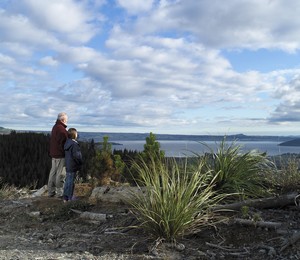Today's decisions shape our future in forestry
 At Scion we work hard at understanding and interpreting how global trends and the drivers of change in business and society will impact on the New Zealand forest industry and the biomaterials sector. This helps us to build future scenarios and determine what new knowledge, technology and public policy will be required by our stakeholders to succeed in different future operating environments. And, this in turn directs our science, collaborations and investment priorities.
At Scion we work hard at understanding and interpreting how global trends and the drivers of change in business and society will impact on the New Zealand forest industry and the biomaterials sector. This helps us to build future scenarios and determine what new knowledge, technology and public policy will be required by our stakeholders to succeed in different future operating environments. And, this in turn directs our science, collaborations and investment priorities.Wherever possible we like to think about future possibilities with our customers so that we can utilise their knowledge of how markets are changing and understand the supply chains through which they are reached. We try hard to imagine a range of different future scenarios rather than to simply extrapolate from today’s circumstances - history tells us disruptive technologies and other ‘wildcards’, while difficult to foresee, should not be overlooked!
As originally illustrated by Shell, with its 40 year global scenarios; well-crafted scenarios help to ensure decisions made today are consistent with the future vision we want to achieve. In the near term for the forest industry this is to achieve $12 billion of exports by 2022. Looking beyond this to the 2030s we expect to have forests that are more than twice as productive as today. Some of these will include genetically modified trees that contribute more to the environment and have traits better suited to consumer needs than at present. Land owners will be paid for the environmental services their forests provide. Earnings per log will be significantly lifted through the sale of high value products from harvesting and processing residues, and technologies that improve processing efficiency such as engineered and modified wood products. And, Maori will have much greater
investment and involvement in the forest industry than today.
A larger national plantation of highly productive forests will help New Zealand in many ways. They will increase export earnings, reduce greenhouse gas emissions, and increase both water quality and biodiversity. Importantly too, jobs will be generated in regions, which will contribute to the vibrancy of rural towns and communities.
This is why achieving Scion’s vision of “Prosperity from trees – Mai i te ngahere oranga” is so important to us and our stakeholders.
As you will read in this edition of Scion Connections our scientists are already hard at work creating this better future by partnering with Maori to grow their economy through forestry, addressing the impacts of climate change, and using the WoodScape model to direct investment into the most promising technologies for wood and wood fibre processing.
I hope you enjoy reading about these examples of the research we are doing and, as always, I welcome any comments you might have on how we can increase the value of this work to you.

Warren Parker
Chief Executive
